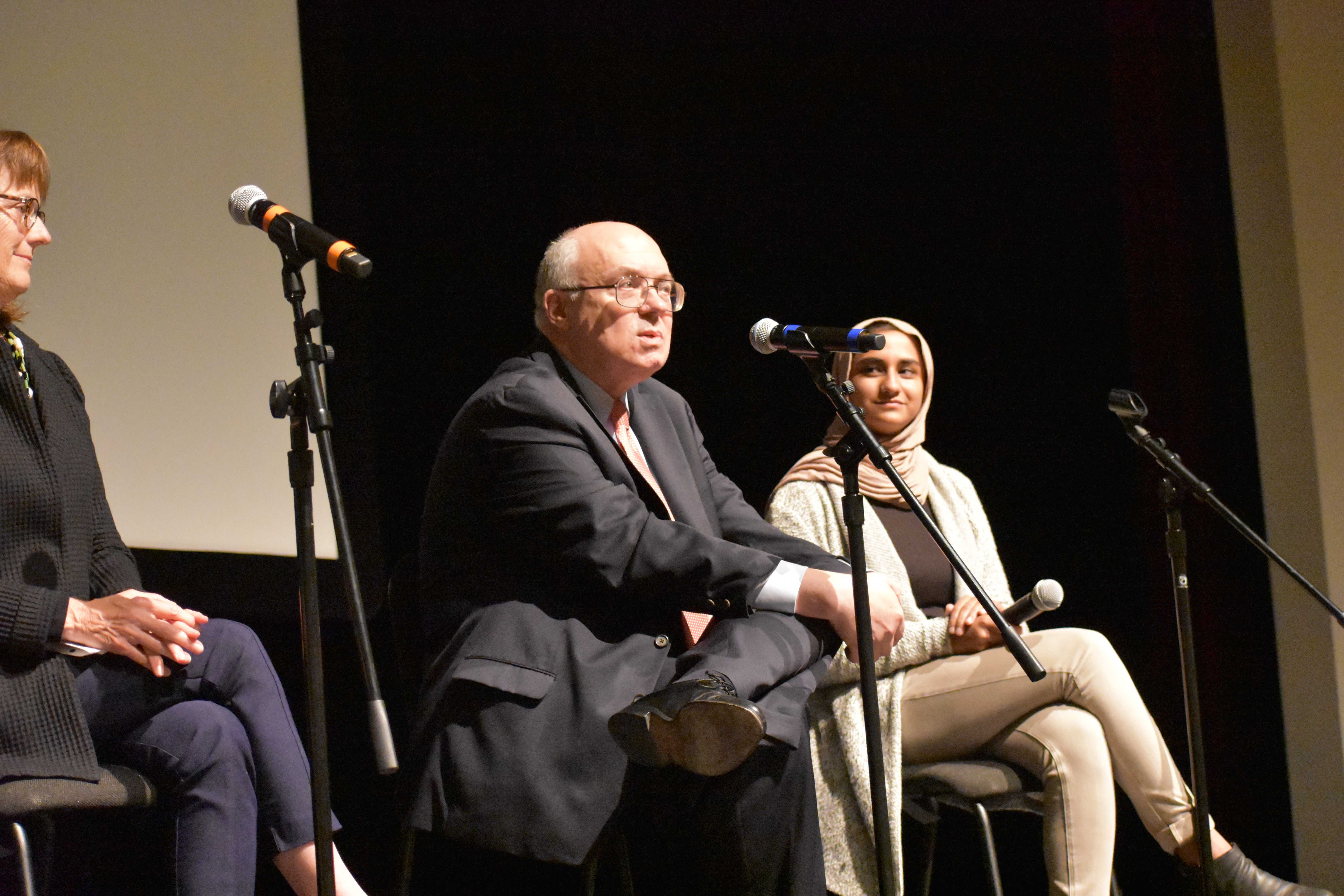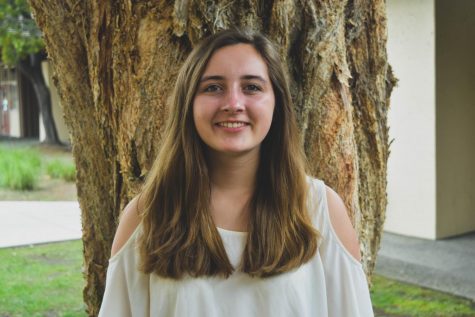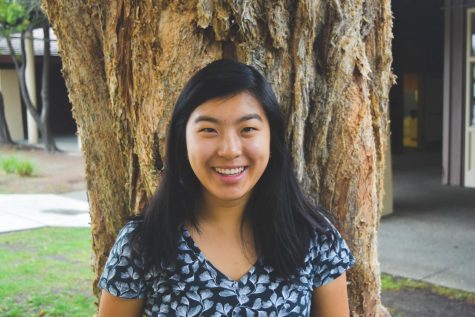
A panel, inspired by the new Paly Journalism Archive, provided historical and personal accounts of Palo Alto’s free speech movement to remind Paly students of their ability to affect change in their communities.
Held during Tuesday’s Flex time in the Performing Arts Center, the panel included Palo Alto Weekly and Palo Alto Online journalist Chris Kenrick, Santa Clara County Supervisor Joe Simitian and Palo Alto historian Steve Staiger. Junior Noor Navid moderated.
Staiger opened the panel by providing background on the issues impacting both Palo Alto and the nation from the 1950s to the 1970s. According to Staiger, Palo Alto was a fairly conservative community in the 1950s, contrasting the left-leaning reputation of the city today.
Staiger discussed Palo Alto’s conversion to a more politically liberal town when young engineers began moving into the area to work at companies such as HP and Lockheed. Then, with the 1960s came the Civil Rights Movement, Cesar Chavez activism and the Free Speech Movement on college campuses. Although many issues shaped the time period, according to Staiger, one of the most impactful events on Palo Alto was the Vietnam War, as thousands of young men, local and nationwide, perished.
“Local anti-war demonstrations began to attract media attention beginning in 1965,” Staiger said. “Lytton Plaza on University Avenue was the main gathering point.”
Kenrick and Simitian, who both graduated from Paly in 1970, recalled the transition they felt as students during this period of intense social conflict. According to Kenrick, around 45 people from Palo Alto and neighboring towns were killed in the Vietnam War, which deeply affected the community.
“We at Paly were really a microcosm of the national things that were going on, including the … fear that our generation was next in line to literally die in a war,” Kenrick said. “College campuses including Stanford and the streets across our country were just deluged with anti-war demonstrations.”
The protests occurring in Palo Alto and surrounding areas did not go unnoticed by the federal government. Kenrick said that fellow Paly classmate Howard Besser, a former member of an activist group known as the Radical Student Union, was one of many students who, thanks to a Freedom of Information Act request, found extensive FBI files on himself years later. According to Kenrick, files extended as far as the students’ families due to the student’s involvement with radical and progressive organizations.
“The government at the time was worried about students that had been radicalized by the war and by all of the other social and racial injustices that we saw around us at that time,” Kenrick said.
Kenrick was a journalist for the Campanile during her time at Paly and said that the time period created a broad range of topics to include in the articles.
“Looking back through the Campaniles at that time, you find an odd mix of stories,” Kenrick said. “Spirit Week, math contests, finalists for Homecoming queen … as well as Paly student protests, anti-war demonstrations, [and] a student strike against the war.”
The 1960s also featured rapid social reform, and Paly’s regulations evolved with the times. The dress code changed to allow girls to wear pants. Debates began over whether long hair was acceptable for boys on sports teams. Simitian, during his term as Paly’s student body president, even organized the abolition of the student government in the spring of 1970 when he realized that despite giving the perception to students that the student government could create change, it wielded no real authority.
“I thought it was disingenuous to suggest we had authority when we didn’t,” Simitian said. “I supported the effort to abolish student body government, and, in fact, students voted to abolish student body government.”
The former student body government was replaced with a town hall-style open microphone for every student to express their concerns, according to Simitian.
“The hope was that abolishing student government as it was then formed would give a voice to every Paly student,” Simitian said.
Following the panel, junior Madrono editor Megan Lee said she was impressed with the impact that former Paly students had on the school. Lee said she sees potential for the next generation of students to usher in further change.
“I think that transition [of social norms] is always happening, and so every student in the school today could probably do something to change what’s happening in the school,” Lee said.
With many journalism students like Lee in the audience, Simitian offered advice to students aspiring to work in journalistic or political environments.
“Don’t underestimate or give away your power; you have more power than you think you do,” Simitian said. “Your voice gives you power if you choose to use it and if you become practiced and effective in the way you use it.”



